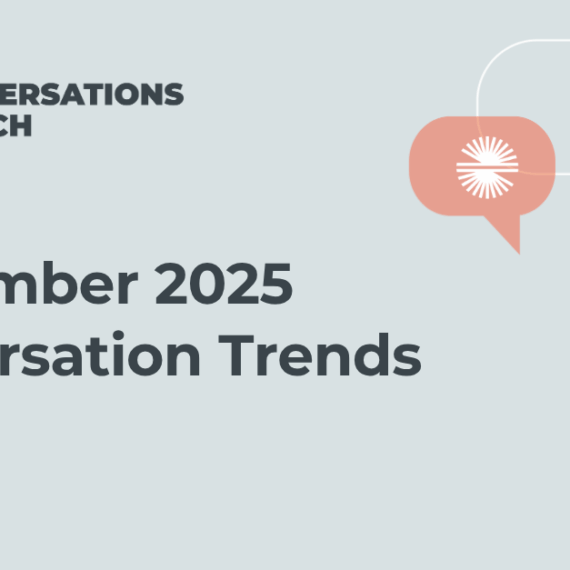We know customer reviews are critical for sales. So why don’t we treat customer stories the same way? Think about the last time you bought something online. (If you’re like me, it’s been less than 24 hours.) While your experience was probably convenient, it might have also felt a little stressful. Why so? Let me count the ways:
- We’re still feeling the pinch of inflation, and we don’t want to waste money on the “wrong” thing.
- We face a tyranny of choice, with an overwhelming (even paralyzing) number of options at our fingertips.
- We’ve been burned before – finally committing to an online purchase before being disappointed by the in-person look, fit, or function…and then feeling stuck with it. (Maybe those jeans will fit me today?? Probably not.)
So how did you overcome all that, and finally click “purchase?” Maybe a friend recommended the brand, or perhaps a social media ad brought you to the website… But I’m going to guess that the ultimate factor that got you to commit was a customer review.
The research would agree: In a recent survey, 98% of shoppers said reviews are an essential resource when making purchase decisions. In fact, ratings and reviews were the most important factor impacting these shoppers’ purchase decisions. In the face of scarce resources and decision fatigue, consumers crave reassurance about the product they’re considering. And they get that reassurance through authentic, credible, human stories.
Buying jeans vs. buying enterprise tech … potato, potato? (That sounded better in my head.)
Those dilemmas you bravely faced down when you clicked “purchase?” Well, enterprise technology buyers also face those same stressors, every day.
They, too, are facing tight budgets.
They, too, are inundated with options and information.
Perhaps they, too, have been burned before – by technology that sounded promising in a sales pitch but fell flat in person. (And then felt stuck with it.)
And they, too, crave the reassurance of real-world stories. After all, just as you don’t really know how a pair of jeans will fit until you pull them on, it’s hard to know how a new technology will function within a company until it’s implemented. Wouldn’t it be nice to hear how it has fit for others, firsthand?
Customer stories are fuel for your demand generation marketing funnel
So, what is a B2B technology marketer to do? You worked so hard on generating interest in your product. You bought ads, you ran webinars, you posted on social media, you went to tradeshows, you wrote bylines and blogs and emails. (I mean, I am exhausted.)
But to generate the trust, authenticity, and credibility buyers need to finally click “purchase,” you can’t forget about customer stories.
Encompassing testimonials, case studies, joint news announcements, and more, these stories shed light on a customer’s challenges, how the product addressed them, and the positive outcomes the customer achieved as a result – making the case for your product in a way that builds trust and ultimately drives sales.
Remember that survey of online shoppers? Nearly three-quarters of those respondents said that ratings and reviews are a key way they learn about products they’ve never purchased before. And nearly half (45%) said they won’t purchase a product if there are no reviews available for it.
Or take it from McKinsey. They found that peer purchasing insights seem to have more influence on consumers than any marketing strategy.
Why would B2B technology buyers be any different? There’s even evidence that crowdsourced enterprise IT reviews sites like Peer Insights, G2 and others are gaining steam compared to old-school analyst firms like Forrester.
If customer stories are so grehttps://bigvalley.co/insights/a-quick-state-of-analyst-relations-gartner-stays-gartner-while-forrester-finds-itself-in-a-tough-spot/at, why aren’t we telling them all the time?
“Okay,” you say, “that all sounds swell. But getting these stories is easier said than done.”
You’re not wrong. Customers can be shy about going public with their stories, not wanting to show vendor favoritism or not wanting to admit they faced any challenges in the first place. What’s more, sales teams are hesitant to ask for favors, afraid of throwing off a delicate customer relationship.
But just as I tell myself when I try to squeeze those jeans on one more time, “We can do hard things.” (Thanks, Glennon.)
Blogs, webinars, tradeshows, and other traditional demand generation marketing tactics shouldn’t be discounted. They matter, a lot. But any marketing tactics that only come from your company can’t provide the real-life social proof of a product’s success that buyers so deeply crave. With customer storytelling, the proof is in the pudding. And in today’s environment of scarce resources and skeptical buyers, that proof has never been more important.
In 2024, make customer stories your demand gen clincher
As buyers look to do more with less and justify new purchases under tight budgets, marketers should in turn focus their resources on spotlighting the authentic, trustworthy stories that will help support those buying decisions.
We’ll talk more here soon about the best ways to accomplish these “hard things” – how to go about ramping up your customer storytelling program, from socializing this strategy with your sales team to convincing your customers to go public with their successes. And we’ll explore the myriad ways your customers can participate far beyond the traditional case study, from videos and conference appearances to press releases and ad campaigns. So, stay tuned.
Buying ain’t easy – for any of us. But with the right storytelling, you can help your customer prospects feel reassured that it’s okay to click “purchase.”











